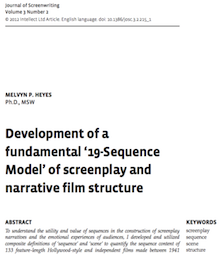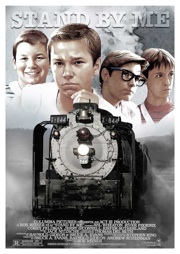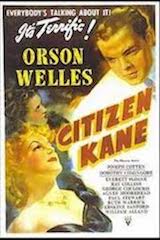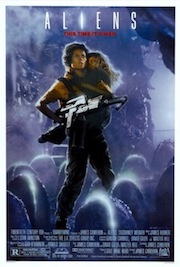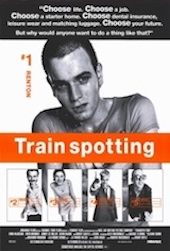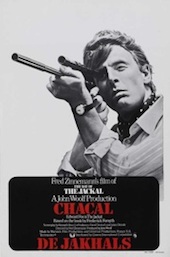Screenwriters - Producers - Directors
Actors - Editors - Film Students
Watching movies in theaters has been a human experience for over 100-years. With the expansion of Movies and TV into Cable Channels, Streaming Videos, Web Series, and even Social Media and YouTube…., there are now even more opportunities for well-written and ideally-structured Screenplays.
"When it comes to story structure, I've always relied on my gut. But Melvyn's 19 Sequence Model shows that almost all films follow the same pattern, whether it's science fiction, drama or comedy. His 19 Sequence theory helped me unlock the Act 3 of a story I had been unable to resolve for months. Many thanks!"Ronald Shusett - Producer/Co-writer "Alien" and "Total Recall"; Executive Producer "Minority Report".
|
Structurally, Scripts are built from Sequences and their composite Scenes. Understanding these fundamental building blocks of Screenplay Structure is critical to writing successful scripts. ScreenWriting Science's 19-Sequence Model (published in the Journal of Screenwriting in 2012) shows how Sequences are distributed within a script.
Benefits:
- Facilitate building your initial script outline.
- Sharpen story and plot pace, and correctly locate key plot points to engage readers and fulfil genre expectations.
- Learn the unlocked secrets of what happens when in key movie genres and plot types.
- Improve script marketability!
Sitemap:
- 19-Sequence-Scene Summaries: structural breakdowns of sucessful screenplays from Alien to The Wizard of Oz to use as models for Your Writing.
- Understand the definition and role of Sequences and Scenes.
- Understand the 19-Sequence Model as fundamental to the structure of screenplays across a broad spectrum of Genres, Stories and Plots.
"Accelerate Your Creative Writing through ScreenWriting Science! "
SEQUENCE-SCENE SUMMARIES
Through a detailed analysis of over 172 Classic and Contemporary screenplays across a broad spectrum of plot types and genres from 1941-Present, ScreenWriting Science identified a fundamental Scene-Sequence structure of successful feature films - the 19-Sequence Model. This structure, plus each film's story events and plot points, are captured in the Screenplay Sequence-Scene Structure Summaries. The Summaries are 8-23 page PDF documents that show you how each screenplay uses the Sequence-Scene organization to present specific plot points to advance the story and create emotional impact.
"...19 Sequence Model shows that almost all films follow the same pattern, whether it's science fiction, drama or comedy...". Ron Shusett, Producer/Screenwriter (Alien, Minority Report).
Sequences are the real way screenwriters organize plot and story into manageable units. The Screenplay Summaries serve as Templates and Event Road Maps to to as a writing guide, or simply to enjoy reading to appreciate story construction.
Utility:
- Choose movies similar to the one you are writing as a model.
- Identify position and pacing of sub-plots.
- Timing of character introduction.
- Positioning of plot turning points, location changes, exposition, respite and transition scenes, flashbacks and foreshadowing.
Latest Summaries:
Crash..... Breakfast at Tiffany's.....Taken..... The Maltese Falcon..... The Constant Gardner..... Eternal Sunshine of the Spotless Mind..... Fail Safe..... The Conversation..... Garden State..... Aguirre, The Wrath of God..... Green Zone..... It's A Wonderful Life..... Hitch..... Chinatown..... Pirates of the Caribbean - Curse of the Black Pearl..... The Hurt Locker..... Touch of Evil..... Kiss Me Deadly..... The Guns of Navarone..... Jurassic Park..... Body Heat..... Basic Instinct..... The Station Agent..... The Flight of the Phoenix...
See more.
Purchase Process:
After purchasing the Screenplay Sequence-Scene Structure Analysis though our secure PayPal-linked system, you can immediately download the Summary. The link is located in the invoice that will appear both on this site after your purchase and in an e-mail sent to your registration address. New Screenplay Summaries are added regularly - so check back often. Feel free to write to Screenwriting Science at mail@screenwritingscience.com or through this website! I welcome your feedback. Thank you for visiting ScreenWriting Science!




